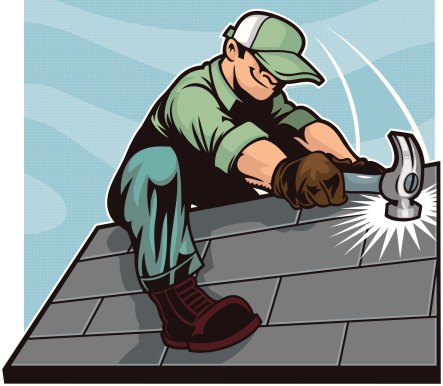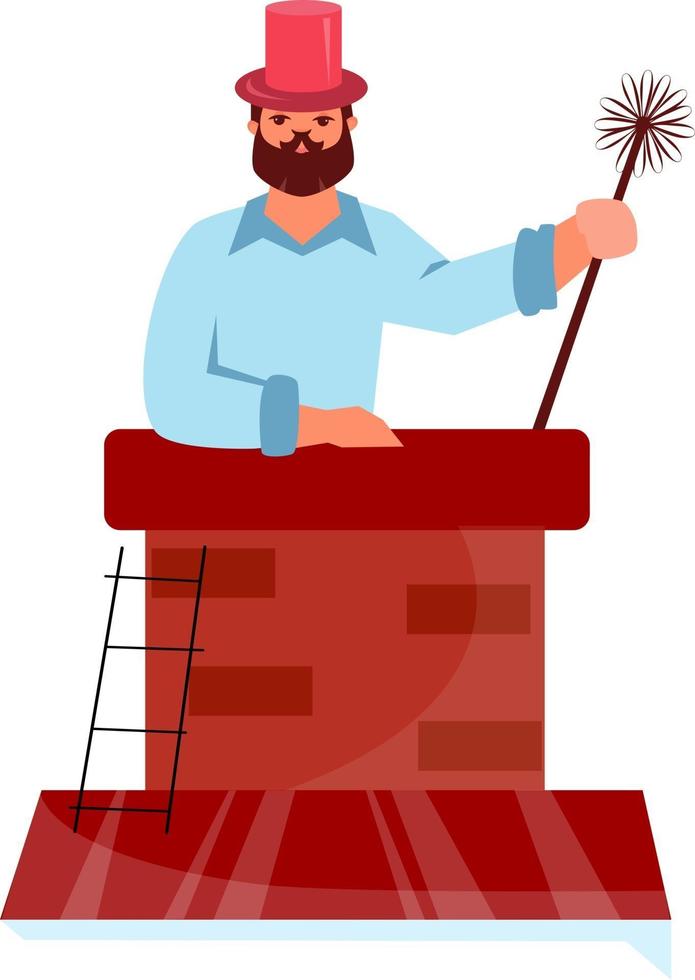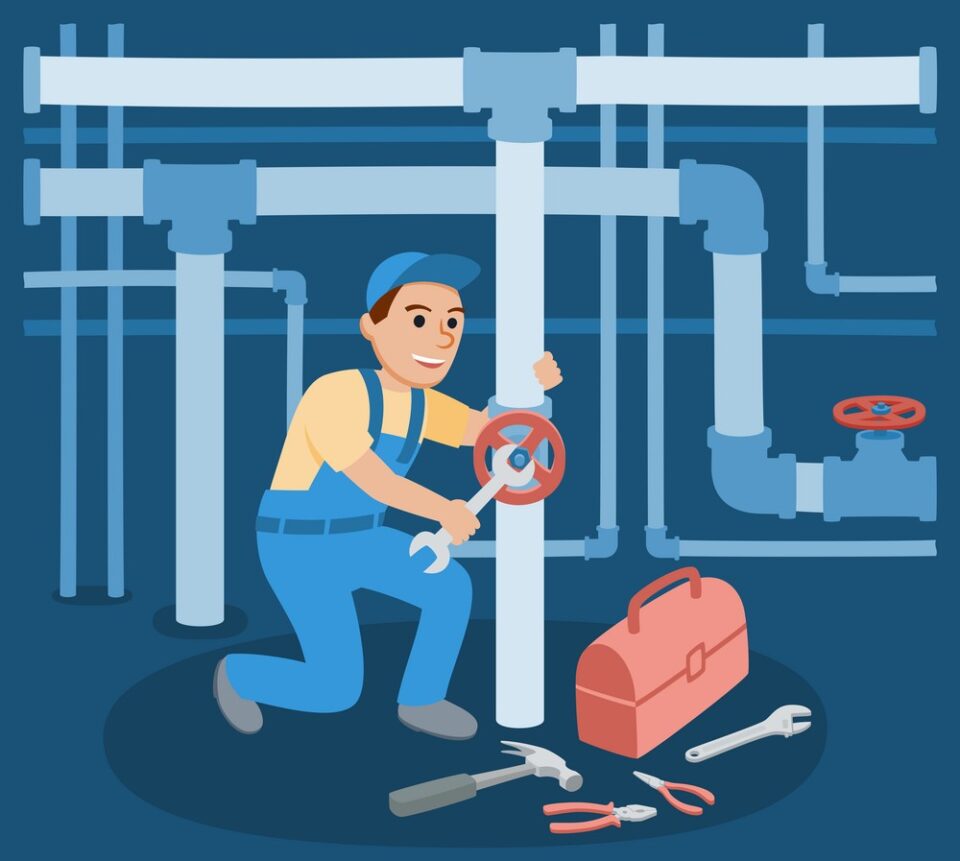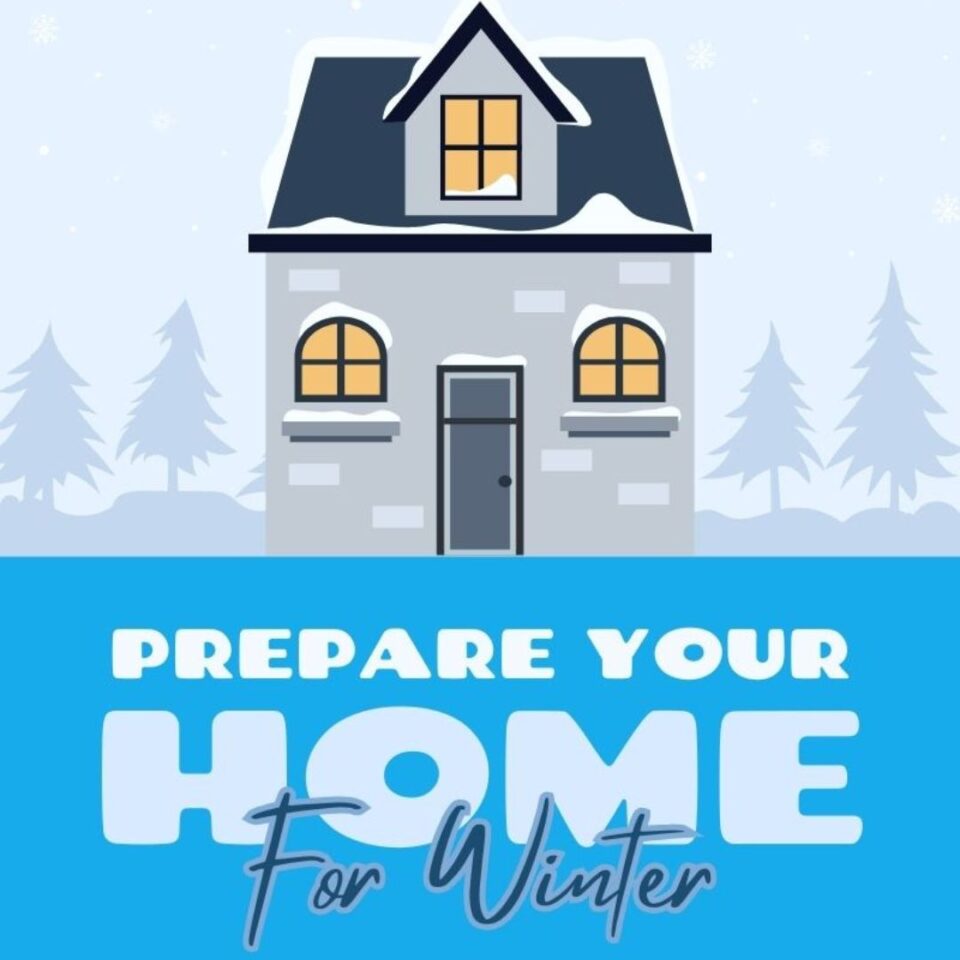Get Your Home Ready for Winter!
When the days start getting shorter and nights get colder, it’s time to start getting your home ready for winter. Here are a few simple things you can do to prevent winter damage and keep your home warm and comfortable all season long.
Winterizing your home starts in the fall
Before the weather starts cooling off dramatically, tackle this winter checklist in the fall months:

- Perform a roof inspection and repair loose shingles
- Check your roof to ensure your shingles are intact. Also, make sure your gutters and downspouts are free and clear of leaves and branches. Apply roof repair glue to any loose shingles in order to help avoid leaks or damage.
- Check your roof to ensure your shingles are intact. Also, make sure your gutters and downspouts are free and clear of leaves and branches. Apply roof repair glue to any loose shingles in order to help avoid leaks or damage.
- Turn off exterior faucets
- Turn off all exterior faucets and drain water from outdoor pipes, valves and sprinkler heads to prevent pipe bursts. If your home is 10 years or older, consider installing frost-proof faucets.
- Seal Gaps and Cracks
- Sealing the gaps and cracks around your windows and doors is essential to keeping your home warm and using less energy this winter. Any gaps wider than the width of a nickel between your siding and window or door frames should have caulking applied to them. Use your finger or a wet caulk-smoothing tool within 2 to 5 minutes of application to smooth your caulk seal.
- Check Door Sweeps
- Door sweeps create a tight seal underneath entryways, another common leak location. They come in two forms: u-shaped pieces that slide under aluminum or steel doors and metal strips that screw nails, or staple to door bottoms. They have an attached strip made of vinyl, plastic, sponge brush, or other air-blocking material. Use it to fill the gap between the bottom of your door and the threshold. To install, measure your exterior and interior doors, fit the strip, drill pilot holes, and tighten with screws.
- Prepare the Fireplace and Chimney
- Have you been using your fireplace often? Do you notice that it isn’t working as well as it used to? You may have some buildup of chimney creosote. Creosote is a black, tar-like substance that forms inside your chimney when smoke doesn’t entirely escape. As it builds up, creosote can cause chimney fires, which can then lead to house fires. Creosote is a type of soot that can form in your chimney as you use your wood burning fireplace. The wood burns and creates smoke which can contain creosote. If the smoke doesn’t rise fast enough, the creosote can accumulate in your chimney. It starts off somewhat easy to clean and remove. However, as it builds up, it develops into a more tar-like substance. Consider the three stages of creosote.
- Stage 1: First Degree Creosote – creosote is a thin layer of flakes. As you first use your fireplace or wood stoves, the smoke will leave some creosote deposits. At this point, the issue isn’t urgent, but over time it can cause problems.
- Stage 2: Second Degree Creosote – in this stage, the creosote starts to look more like tar. It may still look like flakes, but you can’t remove it as easily as before. You may be able to remove it yourself with some tools, but you should consider hiring a chimney sweep to get rid of everything.
- Stage 3: Third Degree Creosote- the creosote is thick and looks like tar. It is more concentrated, and this type of creosote is more likely to cause chimney fires. The creosote restricts air movement within the chimney, and the thickness means the chimney air column is smaller. At this point, you need to contact a professional chimney sweep for help.
- Chimneys can be a source of cold air leaks and other issues in the winter. Have your chimney serviced and inspected before winter weather sets in. Clear any obstructions, check the damper for functionality, check the chimney draft, inspect the firebrick in the fireplace, and have the chimney properly cleaned. This will all ensure that the fireplaces and wood stoves are in good condition for the colder months while guaranteeing that they aren’t letting in more of the elements than they need to.
- Have you been using your fireplace often? Do you notice that it isn’t working as well as it used to? You may have some buildup of chimney creosote. Creosote is a black, tar-like substance that forms inside your chimney when smoke doesn’t entirely escape. As it builds up, creosote can cause chimney fires, which can then lead to house fires. Creosote is a type of soot that can form in your chimney as you use your wood burning fireplace. The wood burns and creates smoke which can contain creosote. If the smoke doesn’t rise fast enough, the creosote can accumulate in your chimney. It starts off somewhat easy to clean and remove. However, as it builds up, it develops into a more tar-like substance. Consider the three stages of creosote.

Clean Gutters and Add Gutter Guards
- Clean gutters allow water to easily flow down from your rooftops and away from your home, preventing damage to your foundation and ice buildup on your roof. Installing gutter guards is a great way to prevent a buildup of leaves and other debris in your gutters.
- Window and Door Weather Stripping
- Weather stripping your windows and doors is another great way to keep the cold out. To find out where weather stripping is needed, wet your hand and run it along your door seam or window casing. The moisture on your hand will help you detect any incoming drafts. Door sweeps and adhesive backed insulation foam are also very effective draft deterrents. If you notice gaps that are wider than the width of a nickel between your siding and window or door frames, reapply exterior caulking to seal the gaps.
If You Have a Modular Home…
…make sure to check the following as well:
- Inspect and Repair Your Skirting
- Improper or damaged skirting can lead to cold drafts and increased heating costs. Inspect your skirting for gaps, cracks, or other signs of wear and tear. Repair any damages or replace the skirting if necessary.
- Check the Underside of Your Home
- Ensure that the blocks or jacks on the underside of your home are in good condition. This is essential considering that if they are broken, it could lead your house to sag, creating even more issues relating to doors, windows, walls, and joints.
- Check Your Plumbing and Insulate the Pipes
- Frozen pipes can lead to expensive repairs and water damage. Inspect all your home’s plumbing lines to prevent your pipes from freezing. While you’re inspecting the underside of your home, check the pipes. Wrap any exposed pipes with pipe insulation or heat tape. Heat tape can prevent your water pipes from freezing during winter. Wrap it around your pipes and plug it into an outlet. The heat tape will automatically regulate the temperature to keep the pipes from freezing. This keeps any warmth insulated, which can prevent costly pipe bursts down the line. Remember to follow the manufacturer’s instructions for safe installation.

Winter Maintenance
These tasks can be tackled in the winter months to keep your home in top shape:
- Book an HVAC Maintenance Appointment
- Regular maintenance of your HVAC unit can improve performance, increase the life of your unit and save you money. Some common signs of required maintenance include leaking around the outside unit, inconsistent temperatures or if your system constantly turns on and off.
- Replace Furnace Filters
- Replace the furnace filter monthly to ensure efficiency and keep dust particles from penetrating the clean, heated air. Inspect your furnace for leaks and test for carbon monoxide. If your furnace is older, cracks can form and cause deadly poisonous gas to escape into your home. It is also recommended you invest in carbon monoxide detectors to monitor the air in your home. To keep your home nice and toasty and to help curb high electric bills, install a smart thermostat. Keep your heat settings lower while you are asleep and program it to raise just before you wake.
- Check Toilets and Faucets for Leaks
- A leaky toilet can waste energy and water. Check for leaks by dropping some food colouring into your tank, and then checking your bowl a short while later, if there is coloured water you have a leak and need maintenance. Leaky faucets can also waste water and can often be repaired by simply replacing washers or rubber seals.
- Clean Laundry Machine Ducts & Check Fire Alarms
- Test smoke alarms monthly and vacuum dust from beneath the cover every six months. Replace batteries as per manufacturer’s instructions. Keep fire extinguishers on every floor of the house and in the kitchen. Make yourself familiar with how they work now so you can move quickly if you need to use them.

